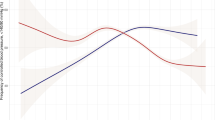Abstract
Cardiovascular (CV) disease is the leading cause of morbidity and mortality for women all over the world. The role and weight of risk factors in relation to gender are not completely clarified as well as their treatment. Pathophysiology of hypertension in woman presents different aspects in relation to phase of life, with an impact on treatment. The only certainties that we have nowadays regarding hypertension therapy in women are really few and may be summarized in: how to treat or, better, what not to use in hypertension in pregnancy and how to treat acute severe hypertension in pregnancy. We have some certainties also on treatment of hypertension associated to some women’s comorbidities. Considering guidelines and analyzing what happens in the real world, we report in this review that women have similar major CV risk factors of men, although a minor CV global risk. However, there are some data that suggest that hypertension and diabetes are more important risk factors in women than in men. Blood pressure reduction and benefit by treatment appear similar in women and men, suggesting that we should aim for similar target of blood pressure, although the lower global risk profile should imply different target. Theoretically, recommended drugs are similar in women and men, but in women we must take in account CV risk profile, comorbidity, side effects, and reproductive health. Finally, registries and observational studies show that fewer women reach the target values of blood pressure and that women receive more frequently prescription of “other” classes of drugs than those recommended by guidelines, even after normalization by age and comorbidities.
Similar content being viewed by others
References
Legato MJ, editor. Principle of gender-specific medicine—gender in the genomic era. 3rd ed. New York: Elsevier; 2017.
Bokrantz T, Ljungman C, Kahan T, Schioler L, et al. Thiazide diuretics and fracture-risk among hypertensive patients. Results from the Swedish Primary Care Cardiovascular Database (SPCCD). J Hypertens. 2015;33(e Suppl 1):e94–5.
Muiesan ML, Salvetti M, Rosei CA, Paini A. Gender differences in antihypertensive treatment: myths or legends? High Blood Press Cardiovasc Prev. 2016;23(2):105–13.
2013 ESH/ESC Guidelines for the management of arterial hypertension: the Task Force for the management of arterial hypertension of the European Society of Hypertension (ESH) and of the European Society of Cardiology (ESC). Eur Heart J. 2013;28:2159–219.
European Guidelines on cardiovascular disease prevention in clinical practice: The Sixth Joint Task Force of the European Society of Cardiology and Other Societies on Cardiovascular Disease Prevention in Clinical Practice. Eur Heart J. 2016;37(29):2315–81.
Mahmood SS, Levy D, Vasan R, Wang TJ. The Framingham Heart Study and the epidemiology of cardiovascular disease: a historical perspective. Lancet. 2014;383(9921):999–1008.
Ljungman C, Mortensen L, Kahan T, Manhem K. Treatment of mild to moderate hypertension by gender perspective: a systematic review. J Womens Health (Larchmt). 2009;18(7):1049–62.
Turnbull F, Woodward M, Neal B, Barzi F, et al. Do men and women respond differently to blood pressure-lowering treatment? Results of prospectively designed overviews of randomized trials. Eur Heart J. 2008;29(21):2669–80.
Roka R, Michimi A, Macy G. Associations between hypertension and body mass index and waist circumference in U.S. adults: a comparative analysis by gender. High Blood Press Cardiovasc Prev. 2015;22(3):265–73.
Leuzzi C, Modena MG. Hypertension in postmenopausal women. Pathophysiology and treatment. High Blood Pressure Cardiov Prev. 2011;18(1):13–8.
Rossi R, Nuzzo AC, Origliani G, Modena MG. Metabolic syndrome affects cardiovascular risk profile as response to treatment in hypertensive postmenopausal women. Hypertension. 2008;52(2):865–72.
Thoenes M, Neuberger HR, Volpe M, Khan BV. Antihypertensive drug therapy and blood pressure control in men and women: an international perspective. J Hum Hypertens. 2010;24(5):336–44.
Author information
Authors and Affiliations
Corresponding author
Ethics declarations
Conflict of interest
On behalf of all authors, the corresponding author states that there is no conflict of interest.
Ethical approval
This article does not contain any studies with human participants or animals performed by any of the authors.
Rights and permissions
About this article
Cite this article
Lodi, E., Carollo, A., Martinotti, V. et al. Hypertension and Pharmacological Therapy in Women. High Blood Press Cardiovasc Prev 25, 147–150 (2018). https://doi.org/10.1007/s40292-018-0257-0
Received:
Accepted:
Published:
Issue Date:
DOI: https://doi.org/10.1007/s40292-018-0257-0




